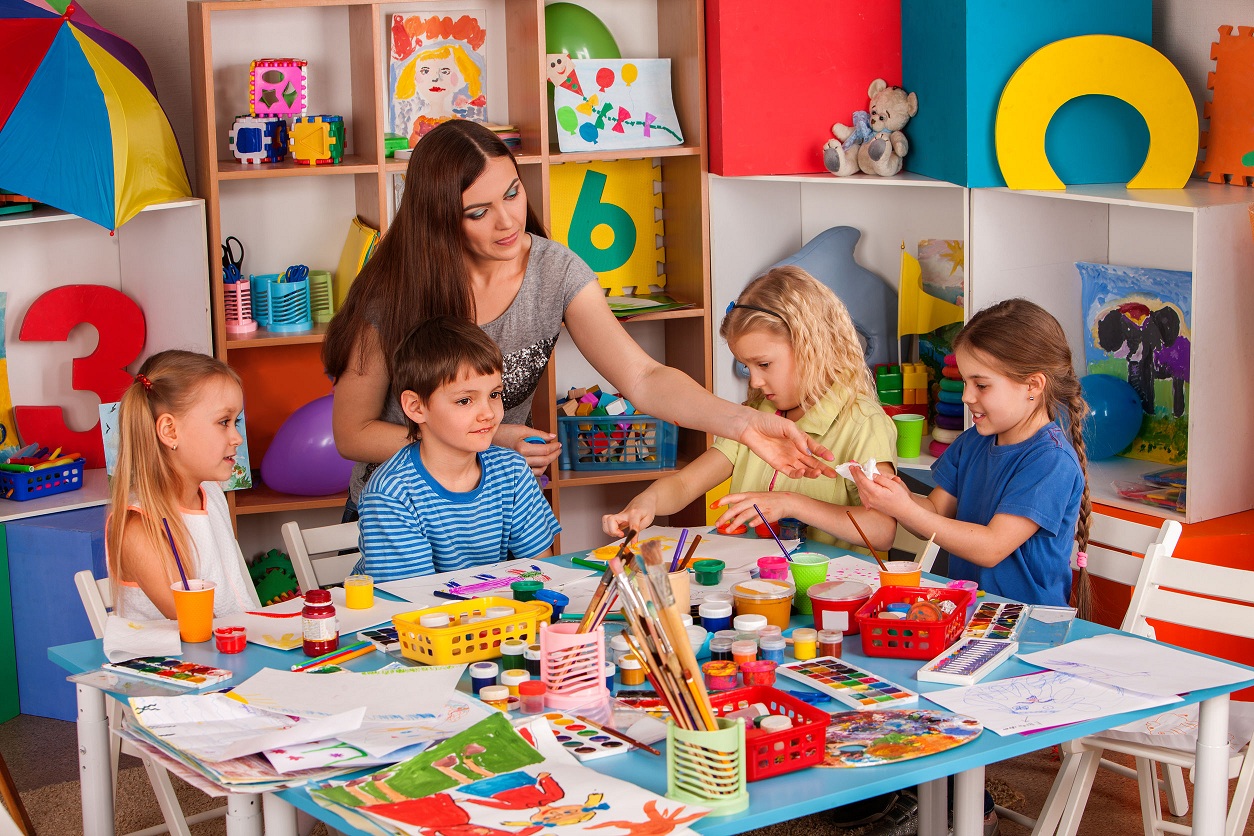Children don’t comprehend danger.
I implore you to read that again. Your understanding of their lack of awareness could one day save them from grievous harm.
Kindergartners are innocence personified. The world whole is their playground, and any mobile devices you equip them with only makes it more magical and fun in their eyes.
The world isn’t exactly paradise, though. It harbors more than its fair share of darkness. Your child doesn’t know that though, not yet. And they are especially vulnerable online.
Older children are possible even more at risk because they so often actively court danger. They don’t think twice of venturing into the dark side of the internet or just hanging out with the wrong crowd to project a certain image.
Physically Supervise Your Child to Keep Them Safe
Keeping our children safe is our responsibility. This is true until they truly learn to fend for themselves, and even then, it behooves you as a parent to keep an eye on them.
Your physical presence is key to their safety, in particular during their formative years:
Children wander off, it’s in their nature. Watch and listen to your child constantly. Stay within easy reach to stop them from harming themselves accidentally.
You must guide your child’s device use. If they watch a video, watch it with them. If they play games, you can ensure they remain age-appropriate.
Children take their cues from their parents. By spending ample time with them, you can make sure they form all the habits they need to stay safe.
Consider Monitoring Software
Monitoring every move your child makes with a mobile number tracker or monitoring software like Spyic sounds a little intrusive. But the fact remains you can’t always be there for your child in person.
Monitoring software affords you multiple advantages, which is why many experts recommend using a monitoring app of some sort:
You can keep an eye on your device-use remotely. If they encounter danger online, you’ll know.
You’ll be able to ensure they consume only age-appropriate content.
If the app has a mobile number tracker built in, you’ll be able to trace mobile number current location online and know where your child is 24/7.
You’ll be able trace their mobile number online if their device gets lost.
Essentially, using monitoring software is like employing a virtual nanny. It keeps an eye on your child 24/7.
If you’re leery of compromising your child’s privacy, you can use monitoring software openly. Many parents form a pact with their children, telling them about the software – including communicating why they’re using it.
If you want to use this mobile tracker, the first thing is to create an account. For Android, you need to download and install Spyic on the target device. You don’t have to worry about your child finding out that the phone is being monitored because it can be hide afterward.
For iPhone user, no software download is required. You just need to provide the iCould credentials for monitoring. You can log in to your Spyic account and monitor their activities once activated.
Get to Know Your Child’s Personality
Your child is unique. Learning how they behave – their strengths, abilities, and blind spots – allows you to predict the dangers they may encounter.
Every parent must be able to answer some core questions about their child:
Is my child brash or cautious?
Would my child come to me if they had a problem?
Would my child confide in me if they were approached by a stranger?
Does my child love physical activities, including the risky ones?
How do you get to know your child? You could take the informal route, meaning simply talking to them or playing games with them and getting to know them that way. If you want to be a bit more scientific, you could sign them up for a personality test.
When you know them well, you will be able to take the steps necessary to protect them. If they have blind spots – such as being too brash – you can counsel them. If they are too proud to admit their problems, you can find ways to get them to open up.
Don’t Overlook Mental Dangers
Mental problems are unfortunately very common in this day and age. Children can come under enormous pressure at home and school. The overreliance on technology and social media sometimes hampers real-world social connections that foster mental health.
Further, children are at a critical juncture of development. They are forming their own identities and drifting away from their parents – but not really secure in their own skin yet. It makes them insecure, uncertain, and generally prone to mental issues.
Some common problems children suffer from include depression, self-harm, anxiety, eating disorders, and hyperactivity.
How do you recognize if your child has mental problems? Here are some common symptoms to watch out for:
A sudden change in your child’s school performance.
Persistent nightmares.
Anger and temper tantrums.
Defiance of your or other authority.
Intense fear and mood swings.
If your child’s behavior is worrying you, get professional help.
Be There For Your Child – and Communicate
Children need love and understanding. The simplest way to provide it is by being there for them. Simply showing up – whether it’s for a talk or an important event in their life – makes them feel appreciated.
How do love and understanding relate to safety? It makes them confident, calm, and secure. It equips them with the confidence they need to face danger. It tells them they can rely on you in there’s ever a problem.
Talking to your child and educating them also allows you to keep them safe. Children don’t always understand the reasoning behind the various “do’s and don’ts” in their life, which causes them to disregard them sometimes.
If your child knows why you expect them to behave a certain way, they will be more actively able to perceive danger:
Teach them about some dangers they may commonly encounter.
Explain why they need to follow the rules.
Convince them dangerous activities are truly dangerous.
It’s not a good idea to make your child overly fearful, though. A little fear is useful and can keep them safe. Too much eats into their confidence.
Follow These Child-Safety Best Practices
Finally, there are some basic responses and rules every parent should drill into their children:
Teach them to say “no”
Children are very trusting and don’t always know how to say no. They often agree to every request made of them. Teach them saying “no” is alright. If any request makes them uncomfortable, they need to know you won’t be mad if they decline.
Point out trusted adults
Not all adults can be trusted. But your child often needs help identifying which adults are trustworthy. Teach them to identify trusted adults – like parents with children, a teacher, or policemen. They should know whom to approach if they have problems.
Explain body boundaries
Your child needs to know their body is theirs and theirs alone. They need to know it’s not okay if other people try to touch them in private places. If someone does touch them inappropriately, tell them to come to you immediately.
Pair them with buddies
Make sure your child knows to go places with one or more people, never alone. This is known as the buddy system and it can be a very effective deterrent. People with malicious intentions think twice about approaching groups, but lone children are easy pickings.
Explain how to contact emergency services
Does your child know about emergency services? Get them to memorize the local emergency number. That way, they’ll know they can simply call for help if they’re ever in any danger and can’t reach you.
Use games to cement lessons
Children learn best by doing – and even better than normal if they’re having fun. Using games – like roleplaying emergencies with your child – teaches them how to act if they’re ever in any danger. They’ll be able to react promptly, the right way, without panicking too much.
Wrapping It Up
Raising a child is a full-time job – as is keeping them safe. You can use tools like mobile number trackers or parental control software – such as Spyic – to make your job easier. But it’s no substitute for your sheer physical presence and love and care.
If you equip your child with the tools they need to identify danger and how to respond in crises, you have succeeded in ensuring their safety.








Leave a Reply